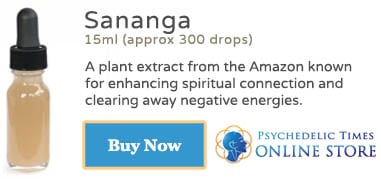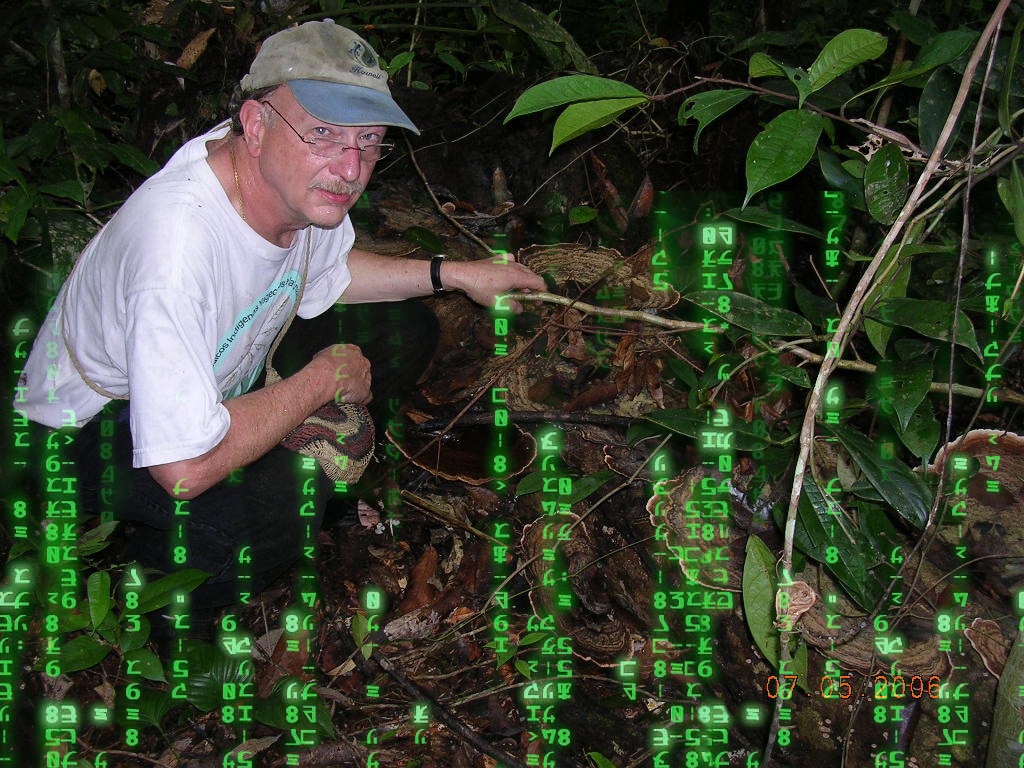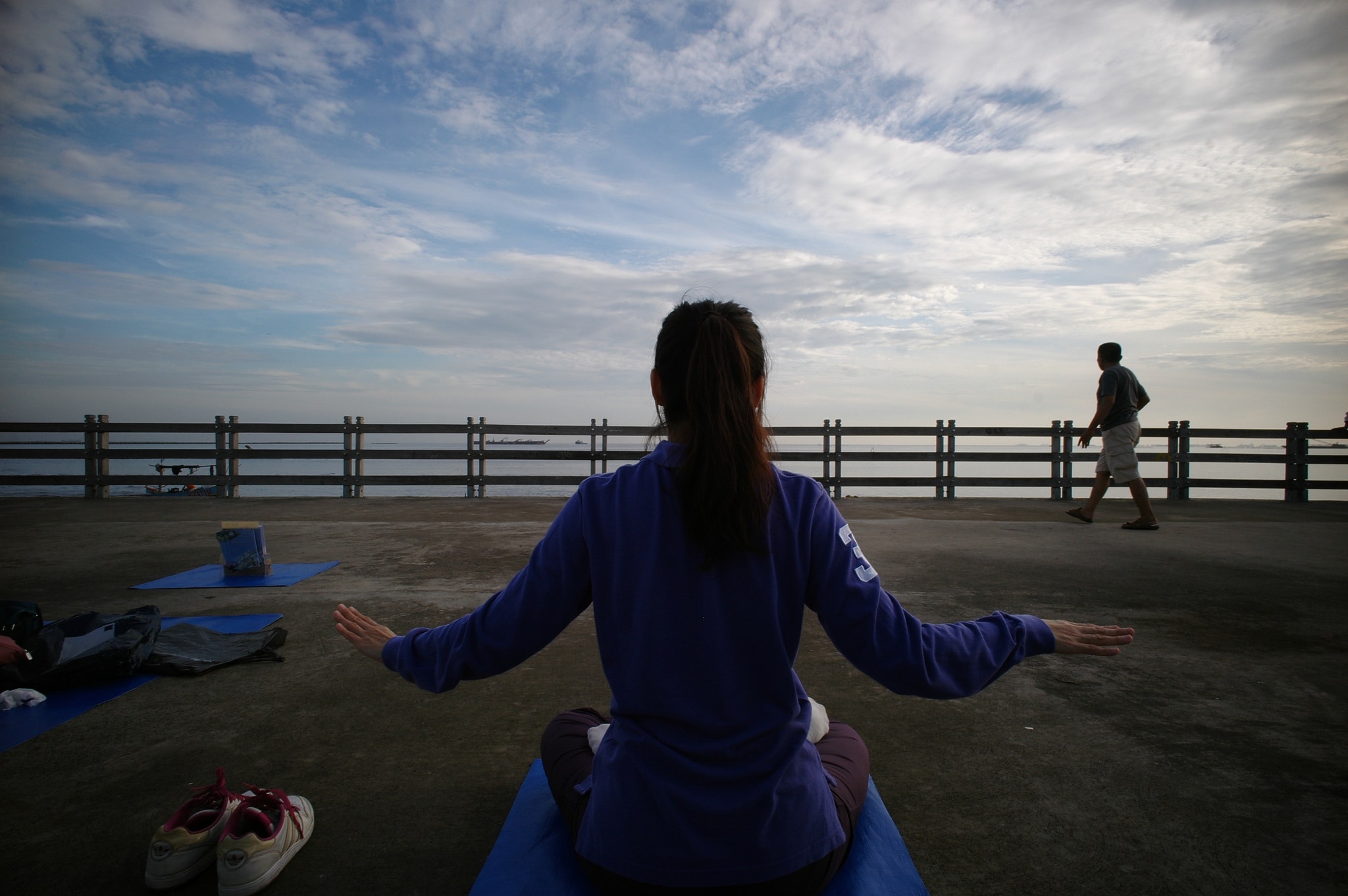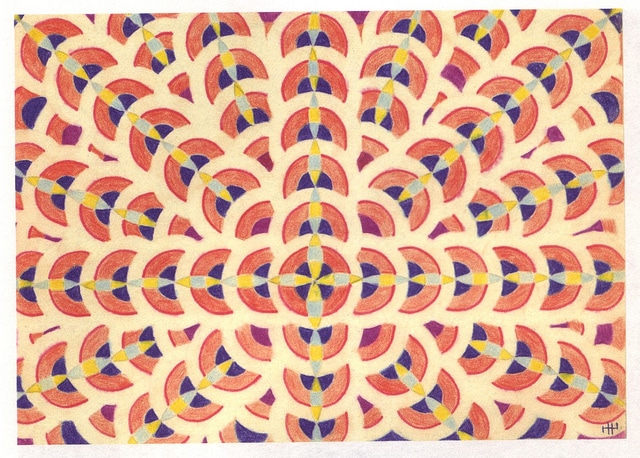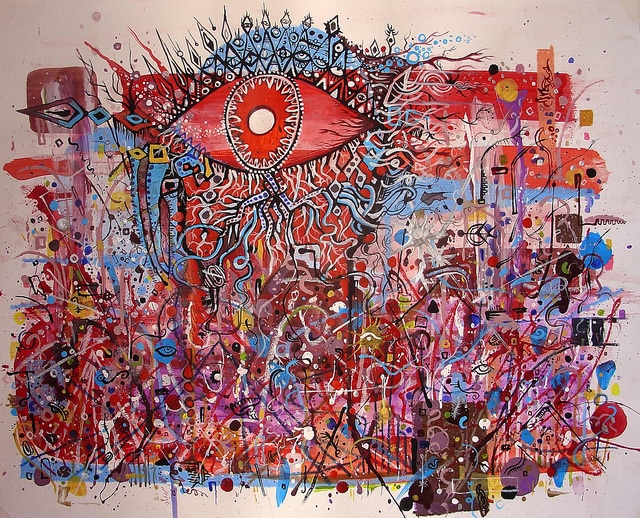
Illustration by Michael J Bowman
The first time I used ayahuasca, I didn’t have many visions; a few jungle animals blinking behind my closed eyes, but not much else. While the Amazonian plant medicine is famous for producing inner visions that provide spiritual guidance, in reality, they’re far from guaranteed. But since my own experience (which, to be clear, was still very worthwhile), I’ve learned a lot about how to properly prepare for an ayahuasca ceremony, from following a proper diet to plant medicines that shamans use to help you ready yourself mentally, emotionally, and spiritually.
Shamans regularly use tobacco snuff and kambo frog venom for this purpose—to clear away negative energies, center your chakras, and prepare you to receive whatever message the medicine may have for you. But of the host of tools used for cleansing and clearing purposes, perhaps the most fascinating—and least understood—is sananga. These eye drops, brewed from a family of Amazonian shrubs, have long been used to treat eye conditions and improve physical eyesight, but they also are known to enhance the inner visions famously associated with ayahuasca. The eye drops work on two levels; first, to clear away negative energies in the same vein of kambo or rapé snuff, and second, to actually enhance the visions themselves.
The exact science behind sananga’s visionary aspects is still debated. But besides the long-standing experiential evidence of its ability to enhance ayahuasca visions, sananga is also thought to share some of the same alkaloids with another famous visionary medicine—the African shrub iboga. The implications of such a relationship, while still tenuous, would explain a lot about how sananga enhances visionary experiences.
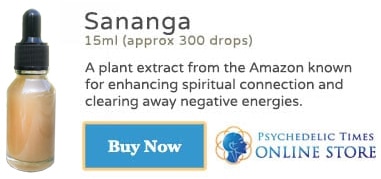
How Sananga Energetically Prepares You for Ayahuasca
Returning to the fickle nature of ayahuasca visions—why is it that some people get visions and others don’t? There are plenty of theories, but the most prevalent one seems to be that if you’re not fully prepared for an ayahuasca ceremony—mentally, spiritually, and emotionally—the medicine cannot go as deep into your psyche because you are blocked by other elements such as toxins from eating red meat, perhaps, or a mental wall you’ve built out of fear.
While an austere pre-diet helps clear your body of physical contaminants, sananga helps clear the energetic toxins. Shamans say sananga works not at the physical or cellular level but rather on an energetic or spiritual level. The medicine essentially locates and removes blockages of negative energies, called panema in local tribal languages. These bad energies manifest as anxiety, anger, laziness, and depression, and they make you more susceptible to diseases of all kinds.
Taking sananga eye drops is often a painful experience, but many practitioners and shamans attest to the importance of this pain, saying that the stinging drops burn away inner anger and ultimately leave you feeling calm and relaxed. On a physiological level, this enhances your eyesight—making colors more saturated and objects more defined—and gives you almost infra-red night vision. On a neurological level, it’s hypothesized to decalcify and activate your pineal gland, which is commonly thought to be the third eye chakra—the chakra associated with psychic clarity and vision.
Inner Visions and the Possible Connection to Iboga
Sananga isn’t the only plant medicine associated with the third eye. Preliminary studies show that shrubs of the Tabernaemontana genus—including the two commonly used to make sananga—share an alkaloid content very similar to the African shrub iboga, which has also been famously known to decalcify the pineal gland and activate the third eye. Iboga even has a similar-sounding genus name: Tabernanthe.
A 2014 study on the anti-addictive properties of ibogaine also suggests an alkaloid connection between members of the shrub family called Apocynaceae—which includes Tabernaemontana undulata (used to make sananga), Tabernanthe iboga (iboga), and the common ibogaine substitute Voacanga africana. Biochemically speaking, this would suggest some overlap in these three varieties’ characteristics and effects, specifically those associated with visions.
While older, another study from 1984 outlining the composition of the Tabernaemontana genus suggested that the genus is thought to share at least some of the 80 alkaloids commonly found in the iboga shrub—including ibogaine, ibogamine, coronaridine, ibogaline, and voacangine. These alkaloids have all been shown to decrease cravings in rats addicted to morphine and cocaine.
Users also report that sananga’s effects echo an iboga experience, but it’s generally agreed that the experience is less intense overall. As one contributor to a kambo forum described it, an equal dose of T. undulata in each eye had “entheogenic effects similar to iboga but much lighter on the whole system.”
While iboga’s anti-addictive properties may seem unrelated to the inner visionary experience, it’s said that ibogaine visions are at the heart of its ability to interrupt addiction. The iboga alkaloids are psychoactive, meaning plants that contain these alkaloids are associated with internal visions that direct and guide the individual. These visions show people the cause of their most deeply-rooted addictions, helping them break the cycle. The presence of iboga alkaloids would explain sananga’s ability to enhance ayahuasca visions because the psychoactive alkaloids would make the sananga itself a visionary medicine,
Preparing for Ayahuasca Visions
The importance of set and setting when taking any psychedelic cannot be underestimated, but particularly with ayahuasca, you can’t gain the full benefits of the medicine until you’ve cleared away the internal static and fully prepared yourself for the experience. It’s only with a calm mind and a centered heart that you can undertake the journey.
This, of course, is easier said than done, so it’s helpful to have a toolbox of supplemental medicines to help you along the way. If you’re considering an ayahuasca ceremony with sananga as a precursor, it’s also a good idea to endeavor your first time with an experienced practitioner or shaman who can administer the eye drops properly and help ensure a positive set and setting.
Even these preparations don’t necessarily guarantee visions, so it’s key to be patient and open-minded about whatever the medicine has in store for you. While we’re still waiting for studies to fully confirm its alkaloid content, sananga has already shown itself to be a powerful supplement to enhance visionary sacred plant medicines and help you gain the full psychospiritual benefits of ayahuasca. Its shared psychoactive alkaloid content with iboga would mean that sananga too provokes psychic inner visions, helping pave the way for a deeper spiritual experience.
